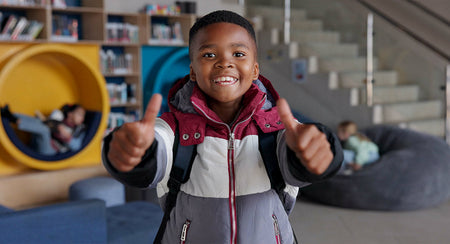Touchstones for Surviving Tough Classroom Moments
We want to stay focused, in control, and continue to move forward regardless of what each day might bring. Yet, consider the typical day in a classroom. Distractions, disruptions, and detours can come at us in a hurry. The press and stress of these situations can lead us to forget or overlook some of the most effective responses, redirections, and rerouting that can keep the class and learning on track.
The good news is that often a few short phrases and quick reminders can help us to remain in control and move forward despite the pace and chaos of the day. Here are seven pieces of time-tested, sage advice that we can tap and apply to avoid losing focus or momentum.
Seek to connect before trying to correct. Students want to know that we care before they are ready to listen and follow our guidance and direction. If we want students to respond to our corrections, we need to start by establishing connections. The truth is that our effectiveness in redirecting students is more likely to depend on our relationship than the technique we apply to correct their behavior.
Be curious, not furious. Students occasionally will do things that distract and disturb us. Our first reaction can be to become angry and upset. Yet, the truth is that student behavior is driven by purpose. They do things for a reason. If we allow ourselves to react based on how we feel, we risk missing what lies behind student actions and decisions. Doing so can make the situation worse, or lead to having to backtrack once we learn the full story. Rather than allowing our emotions to take over, we do better to inquire, listen, and understand before deciding how to respond.
Give the benefit of the doubt. We may be confused or disappointed by an action a student takes or choice they make. Our first reaction might be to be frustrated and accusatory, especially if the student has a history of poor judgement or misbehavior. However, doing so can lead us to assume the worst and draw negative conclusions about the situation before we fully understand. Consequently, we may miss an opportunity to support, trust, and teach. We may even find ourselves having to apologize for jumping to a negative conclusion, saying something, or acting in a way we later regret. On the other hand, when we assume that students act based on positive intent, we rarely find ourselves regretting our actions or having to apologize.
Don’t confuse students with their behavior. Students can do amazingly frustrating and disappointing things. They can “push our buttons” in ingenious ways. Yet, we need to remember that students’ actions and their identities are not the same. Behaviors are choices students make. They can learn and grow from their mistakes. We need to value students for who they are, not what they have done.
Think and respond, not trigger and react. In the heat of the moment, we can find ourselves susceptible to emotional triggers. We can react to situations without thinking. We might even feel as though a student’s behavior made us do what we did. Unfortunately, our reaction often leads to regret. In truth, there exists a crucial gap between a student’s action and our response. We can choose to pause, think, and choose before we act. This split-second decision gives us the power to control our behavior and respond with better judgement and a more effective response.
De-escalate before trying to educate. Hearing and responding effectively is especially difficult when emotions are high. Trying to modify behavior or teach a lesson when students are upset or agitated usually is futile. In fact, it can escalate the situation. A calm voice, offering supportive choices, and relaxed demeanor usually will be more effective in the moment. Once the student has had some time to calm down, discussion about what happened, what needs to be learned, and planning for the future will be better received and more effective.
Leverage expectations to lift performance. It has been said that we get what we expect. While holding high expectations of our students does not always mean that everyone will immediately respond by accelerating their learning and achieving complete success, our belief that students can learn, grow, and improve makes a difference. Decades of research demonstrate that what teachers believe about the learning potential of their students has an impact on how they perform. We may wonder if there is a danger of expecting too much. Yet rarely is this a problem. In fact, the consequences of expecting too little are far more worrisome.
If some of these points resonate with you and you want to remember them when experiencing behavior challenges in the classroom, consider putting them on sticky notes and placing them in prominent places as reminders. Alternatively, some of these insights can be good mantras to repeat and reflect on as you prepare for a day that you expect to be especially challenging. Of course, some or all these nuggets may already be part of your daily routine. If so, keep up the good work.















